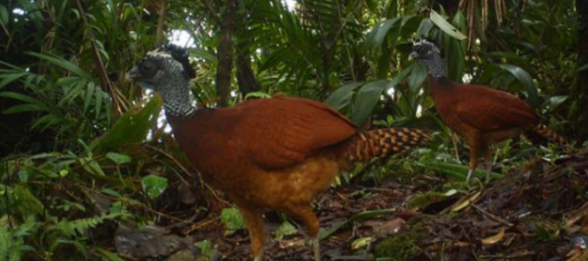

In Panama there is little information on the ecology of walking birds, which are being threatened by anthropogenic activities causing the loss of their shelters, nesting resources and food, as well as the modification of their distribution and circadian patterns. The use of camera traps has increased in recent years, allowing greater effectiveness to study understory birds in the Neotropics. The objective of this study was to understand the ecological diversity of understory birds and their circadian patterns with camera traps located at different altitude levels in the Cerro Chucantí Private Natural Reserve (RNPCC). We placed one camera trap for three sampling stations, at altitudinal ranges of 800, 1,350 and 1,375 msnm, from December 2012 to May 2014, with a sampling effort of 38,592 hours/trap. We obtained four orders, six families and nine species. The species with the highest detection frequency were Zentrygon goldmani at 1,350 meters above sea level (masl), Leptotila cassinii at 800 masl and Crax rubra with detection in all stations. The ecological diversity indices (IDE) were, Simpson: 0.65, Dominance: 0.35, Shannon: 1.38, Margalef: 1.46 and Cha1: 10. The Chao2 estimator indicates that 31% of species that can be detected by the camera trap method are missing, suggesting to expand the number of cameras and altitudinal ranges. The SDI per sampling station was low diversity and richness, medium dominance, with no significant difference between stations (P> 0.05). The Whittaker Index shows a 93% difference for understory bird’s richness between sampling stations. All understory birds exhibited diurnal circadian activity. This study remark the effectiveness of the long-term use of camera traps to study the ecology of understory birds and emphasizes the importance of the RNPCC as a key site for the conservation of them at Darien.